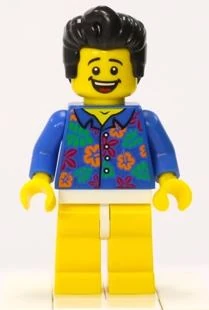Parshat Tetzaveh
by Rabbi Avi Billet
Prior to describing each of the garments of the priests, the Torah tells us “These are the vestments that they shall make: a breastplate, an ephod, a robe, a knitted tunic, a turban, and a sash. Make them sacred vestments for Aaron and his sons so that they will be able to be priests to Me.” (28:4)
Every Jew who went to day school or yeshiva, or who simply studies the parsha, knows that a regular Kohen wears 4 garments, and the Kohen Gadol (High Priest) wears 4 additional garments for a total of eight garments. And yet, this preview summary only mentions 6 garments, leaving out the pants and the “tzitz” (forehead plate).
And so, the obvious question: why are the pants and tzitz left out? [Almost seems like a bad gag from the Lego Movie]
One could suggest that the pants are obvious. How they are made is not described in this chapter, as the verse simply says “Also make linen pants to cover their nakedness, reaching from their waists to their thighs.” (28:42) Even in their placement in the instructions, they seem an afterthought after “Place these [vestments] on Aaron and his sons. Then anoint them, and install them, sanctifying them to be priests to Me.” (28:41)
However, one can wonder about the simplicity of the tunic, turban and sash, which are included in the list of the magnificent-six even though their instructions are all in one verse! “Knit the tunic out of linen. [Also] make the turban out of linen and an embroidered sash.” (28:39) The instruction to make them precedes that seemingly final command for placing the vestments on the kohanim, which indicates they are not an afterthought. Clearly, leaving out the pants is not because of their simplicity in design and instruction.
The tzitz, on the other hand, has three verses dedicated to its instruction (28:36-38). It is certainly not an afterthought. And yet, why not mention in the magnificent-six verse?
Ibn Ezra notes simply that the pants are not mentioned because they are obvious, as everyone wears undergarments. The tzitz is left out of the garment list because even though it is part of the count of the Kohen Gadol’s vestments, it is not really a "garment."
More practically, Chizkuni suggests that the pants and the tzitz are included in the words “Make them sacred vestments” from 28:4, while he also notes that the pants don’t go in a “makom kavod,” in a place of honor/respect on the body. Baal haTurim combines these teachings of Ibn Ezra and Chizkuni, while Or haChaim says the six vestments listed are all of equal holiness, while the tzitz is higher than all, on account of it being made out of gold and having God’s name on it, while the pants, owing to their placement, is on a lower level than the other garments. (no pun intended)
In fact, Rabbenu Bachaye notes that the pants are the only garments for which the Kohen did not get assistance in putting on (28:41, 29:5) because the pants are a private matter, while the other garments are what the people are instructed to place on the kohanim.
The Talmud notes in Arachin 16a that each vestment of the priests helps bring atonement for sins related to either where it is placed on the body, or some other sin thematically related to it in the Bible.
Utilizing the direction set in motion by the Talmud, we’ll conclude with a teaching from Kli Yakar, to hopefully understand a little more clearly.
According to the Talmud, the Tzitz brings atonement for brazenness, while the pants provide atonement for sins of a sexual nature.
Kli Yakar argues that the Tzitz provides atonement for the sins of a sexual nature as well. The pants, which are private and not seen, atone for the private sins of individuals. The Tzitz, on the other hand, must bring atonement for the brazen nature of sexual sins done in public. He notes that the Talmud may be referring to a basic sin of brazenness, but he thinks the connection made between the pants and Tzitz is too much to be overlooked, and not appreciated for this deeper message.
Perhaps the lesson for the kohanim is also for the people. Of course, a Kohen who represents the people in their service of God is advised to remember the significance attached to his undergarments, as per the Talmudic message to him, as well is the Kohen Gadol to recall on an even higher level what his responsibility is - not only to his Kohen brethren but to all of the nation of Israel which he serves - to be exceedingly humble and cognizant of the role he plays as the messenger of the people.
But the pants and Tzitz being grouped together might also be a reminder of the message associated with the other “tzitz” of the Torah – the “tzitzit.” The Torah tells us in the paragraph of tzitzit, that seeing them will remind “You to not stray after your heart and eyes, which [in the past] have led you to immorality” (Bamidbar 15:39) Maybe, at least for men who wear tzitzit, the tzitzit, which are seen when put on, and are otherwise often tucked into the pants, can play that role of the tzitz and the pants of the kohanim, to help us overcome sins of brazenness and immorality, whether committed in public – through the things we see on the street, or committed in private – in whatever that means to people, as our hearts and eyes are trained to use the tzitzit as guides to proper service of God.

No comments:
Post a Comment